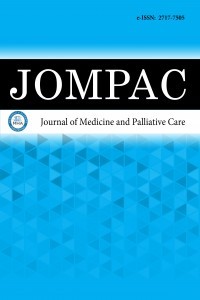1.
Schumacher S. Epidemiologie und atiologie der harninkontinenz im alter [epidemiology and etiology of urinary incontinence in the elderly]. Urologe A. 2007;46(4):357-358. doi:10.1007/s00120- 007-1315-8
2.
Aoki Y, Brown HW, Brubaker L, Cornu JN, Daly JO, Cartwright R. Urinary incontinence in women. Nat Rev Dis Primers. 2017;3(1):17042. doi:10. 1038/nrdp.2017.42
3.
Zhang AY, Xu X. Prevalence, burden, and treatment of lower urinary tract symptoms in men aged 50 and older: a systematic review of the literature.SAGE Open Nurs. 2018;4:2377960818811773. doi.org/10.1177/ 2377960818811773
4.
Haylen BT, de Ridder D, Freeman RM, et al. An International Urogynecological Association (IUGA)/International Continence Society (ICS) joint report on the terminology for female pelvic floor dysfunction. Neurourol Urodyn. 2010;29(1):4-20. doi: 10.1002/nau.20798
5.
Gallagher D, Heymsfield SB, Heo M, Jebb SA, Murgatroyd PR, Sakamoto Y. Healthy percentage body fat ranges: an approach for developing guidelines based on body mass index. Am J Clin Nutr. 2000;72(3):694-701. doi:10. 1093/ajcn/72.3.694
6.
Rai R, Ghosh T, Jangra S, Sharma S, Panda S, Kochhar KP. Relationship between body-mass index and body fat percentage in a group of Indian participants: a cross-sectional study from a tertiary care hospital. Cureus. 2023;15(10):e47817. doi:10.7759/cureus.47817
7.
Zacche MM, Giarenis I, Thiagamoorthy G, Robinson D, Cardozo L. Is there an association between aspects of the metabolic syndrome and overactive bladder? A prospective cohort study in women with lower urinary tract symptoms. Eur J Obstet Gynecol Reprod Biol. 2017;217:1-5. doi:10.1016/j.ejogrb.2017.08.002
8.
Beyene HB, Giles C, Huynh K, et al. Metabolic phenotyping of BMI to characterize cardiometabolic risk: evidence from large population-based cohorts. Nat Commun. 2023;14(1):6280. doi:10.1038/s41467-023-41963-7
9.
Lopes HF, Corrêa-Giannella ML, Consolim-Colombo FM, Egan BM. Visceral adiposity syndrome. Diabetol Metab Syndr. 2016;8(1):40. doi:10. 1186/s13098-016-0156-2
10.
Vilalta A, Gutiérrez JA, Chaves S, Hernández M, Urbina S, Hompesch M. Adipose tissue measurement in clinical research for obesity, type 2 diabetes and NAFLD/NASH. Endocrinol Diabetes Metab. 2022;5(3):e00335. doi:10. 1002/edm2.335
11.
Amato MC, Giordano C. Clinical indications and proper use of visceral adiposity index. Nutr Metab Cardiovasc Dis. 2013;23(8):e31-32. doi:10. 1016/j.numecd.2013.04.006
12.
Zhou H, Li T, Li J, Zhuang X, Yang J. The association between visceral adiposity index and risk of type 2 diabetes mellitus. Sci Rep. 2024;14(1): 16634. doi:10.1038/s41598-024-67430-x
13.
Ye X, Zhang G, Han C, Wang P, Lu J, Zhang M. The association between Chinese visceral adiposity index and cardiometabolic multimorbidity among Chinese middle-aged and older adults: a national cohort study. Front Endocrinol (Lausanne). 2024;15:1381949. doi:10.3389/fendo.2024.1381949
14.
Wang L, Yi Z. Obesity paradox and aging: visceral adiposity index and all-cause mortality in older individuals: a prospective cohort study. Front Endocrinol (Lausanne). 2022;13:975209. doi:10.3389/fendo.2022.975209
15.
He S, Yang J, Li X, Gu H, Su Q, Qin L. Visceral adiposity index is associated with lung function impairment: a population-based study. Respir Res. 2021; 22(1):2. doi:10.1186/s12931-020-01599-3
16.
Wang K, Xia F, Li Q, Luo X, Wu J. The associations of weekend warrior activity patterns with the visceral adiposity index in us adults: repeated cross-sectional study. JMIR Public Health Surveill. 2023;9(1):e41973. doi: 10.2196/41973
17.
Uchida K, Sugimoto T, Tange C, et al. Association between abdominal adiposity and cognitive decline in older adults: a 10-year community-based study. J Nutr Health Aging. 2024;28(3):100175. doi:10.1016/j.jnha. 2024.100175
18.
Karabay E, Karşıyakalı N, Kayar K, Verim L, Tosun Ç, Yücebaş Ö. Evaluation of relationship between visceral adiposity ındex and overactivate bladder symptoms in females. Endourol Bull. 2020;12(2):150-156.
19.
Hagovska M, Švihra J, Buková A, et al. The relationship between overweight and overactive bladder symptoms. Obes Facts. 2020;13(3):297-306. doi:10. 1159/000506486
20.
Dursun M, Otunctemur A, Ozbek E, Sahin S, Besiroglu H, Koklu I. Stress urinary incontinence and visceral adipose index: a new risk parameter. Int Urol Nephrol. 2014;46 (12):2297-2300. doi:10.1007/s11255-014- 0832-9
21.
Al-Shaiji TF, Radomski SB. Relationship between body-mass index and overactive bladder in women and correlations with urodynamic evaluation. Int Neurourol J. 2012;16(3):126-131. doi: 10.5213/inj.2012.16.3.126
22.
Sahiner Z, Mangır N, Güner M, et al. The relationship between urinary incontinence and abdominal muscle thickness in community-dwelling older women undergoing comprehensive geriatric assessment. Eur Geriatr Med. 2023;14(6):1319-1325. doi:10.1007/s41999-023-00874-y

